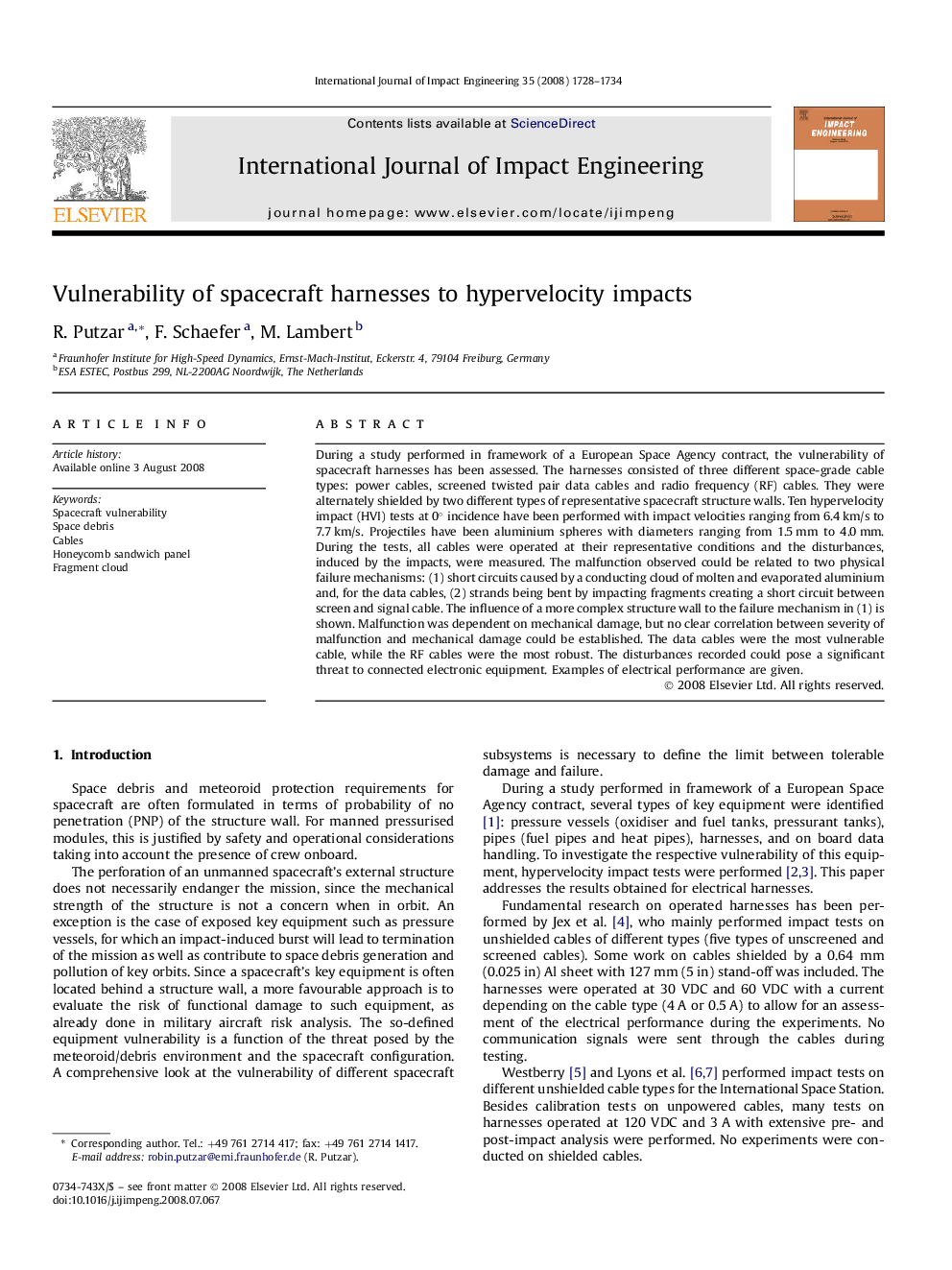| Article ID | Journal | Published Year | Pages | File Type |
|---|---|---|---|---|
| 779496 | International Journal of Impact Engineering | 2008 | 7 Pages |
During a study performed in framework of a European Space Agency contract, the vulnerability of spacecraft harnesses has been assessed. The harnesses consisted of three different space-grade cable types: power cables, screened twisted pair data cables and radio frequency (RF) cables. They were alternately shielded by two different types of representative spacecraft structure walls. Ten hypervelocity impact (HVI) tests at 0° incidence have been performed with impact velocities ranging from 6.4 km/s to 7.7 km/s. Projectiles have been aluminium spheres with diameters ranging from 1.5 mm to 4.0 mm. During the tests, all cables were operated at their representative conditions and the disturbances, induced by the impacts, were measured. The malfunction observed could be related to two physical failure mechanisms: (1) short circuits caused by a conducting cloud of molten and evaporated aluminium and, for the data cables, (2) strands being bent by impacting fragments creating a short circuit between screen and signal cable. The influence of a more complex structure wall to the failure mechanism in (1) is shown. Malfunction was dependent on mechanical damage, but no clear correlation between severity of malfunction and mechanical damage could be established. The data cables were the most vulnerable cable, while the RF cables were the most robust. The disturbances recorded could pose a significant threat to connected electronic equipment. Examples of electrical performance are given.
